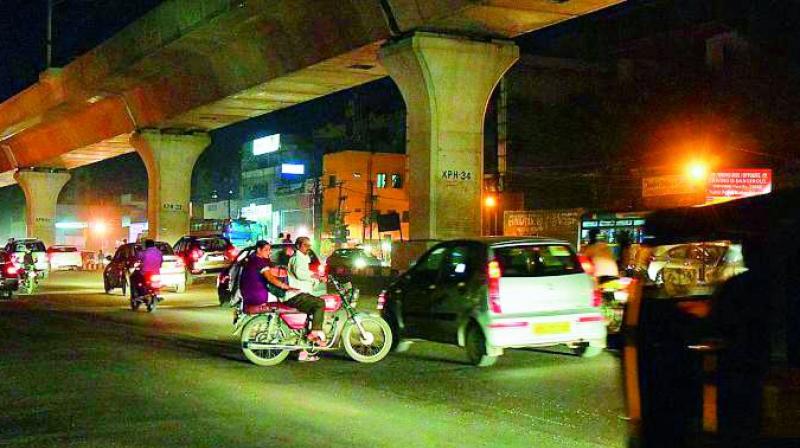Hyderabad: Little concern for pedestrians

Hyderabad: Hyderabad reported 362 fatal accidents in 2015-16. Ninety per cent of the victims were two-wheelers riders, pillion riders and pedestrians. Most of the pedestrians who died were crossing at inter medians and not at junctions. Out of the 225 junctions, major crossroads like Sarojini Devi Eye Hospital, Dilsukhnagar, and Koti do not have zebra crossings.
The two prime reasons for pedestrian deaths are rash driving and lack of infrastructure for pedestrians. Also, at places where traffic signals have zebra crossings, the signal timings are not adequate for even a normal, healthy person to cross without breaking into a run. At such places, the elderly and children cannot cross at all without assistance. Moreover, at these signals, free left-turn traffic does not slow down or stop for pedestrians even if the signal is green for pedestrians.
Mr S. Adishankar, secretary of Roadkraft, (an independent organisation that works with GHMC and the Traffic department) said, “A rough estimate indicates that pedestrians form 80 per cent of road users. And they are the most vulnerable section. Only six per cent of the population travels in motorised transport like cars or two-wheelers. Almost every person has to use the road as a pedestrian at some time or the other. The accident statistics of pedestrian deaths in Hydera-bad and Cyberabad is alarming and seems to be continuing unabated. In Hyderabad alone, for the period of January and May 2016, 168 people were killed in road accidents out of which 69 (41 per cent) were pedestrians.”
The number of fatal deaths is recorded, but not of those who are injured, which would be double the count. Rash driving also contributes to non-fatal accidents. According to Mr Malcom Wolfe, founder of Roadkraft, “As per the Motor Vehicles Act, a candidate has to be tested on 24 skills/parameters before he/she can be issued a driving license. But in a closed testing track, only three of the 24 skills/parameters can be tested. And none of them includes any interaction with other road users including pedestrians. So a driver is given a license without being imparted any knowledge on how to react at a junction, crossroad, zebra crossing, right-of-way at roundabouts. There are numerous cases of persons who have obtained driving licenses but do not have the confidence to drive on our roads.”
“Information obtained through the Right To Information (RTI) Act has revealed that the pass percentage for driving license tests is 97. Less than three per cent fail the test,” Mr Wolfe said. In foreign countries, he said that the testing system is very stringent and very few people get a driving license in the first attempt. “The pass percentage is around 50- 60 per cent,” he said.

